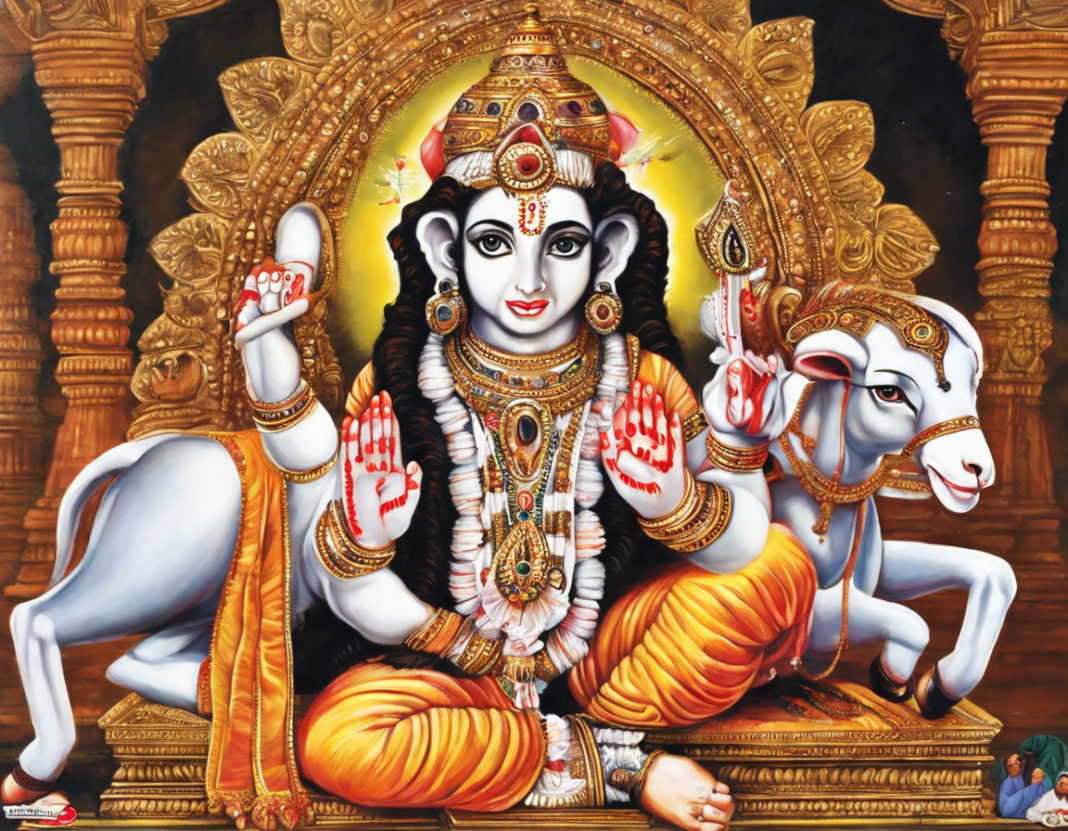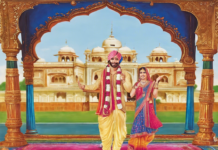Introduction:
In the heart of India, in the historical city of Ayodhya, lies the revered Ram Lala Ki Murti or the idol of Lord Rama as a child. This sacred icon holds immense significance in Hindu mythology and history, adorning the famous Ram Janmabhoomi temple. Let’s delve deeper into the significance and history of this revered deity.
Significance of Ram Lala Ki Murti:
1. Divine Incarnation:
According to Hindu scriptures, Lord Rama is believed to be the seventh incarnation of Lord Vishnu, the Preserver in the Hindu Trinity. The Ram Lala Ki Murti represents the divine essence of Lord Rama in his form as a child, symbolizing innocence, purity, and righteousness.
2. Symbol of Protection:
Devotees believe that the presence of Ram Lala Ki Murti provides protection and blessings to all who visit the temple. It is said that worshipping Lord Rama can bring peace, prosperity, and harmony into one’s life.
3. Cultural Heritage:
The idol of Ram Lala is not just a religious symbol but also a part of India’s rich cultural heritage. It represents the deep-rooted faith and devotion of millions of Hindus worldwide towards Lord Rama, showcasing the unity and diversity of India’s spiritual practices.
4. Source of Inspiration:
The teachings and life story of Lord Rama depicted in the ancient epic, the Ramayana, serve as a source of inspiration for millions of people. The Ram Lala Ki Murti stands as a reminder of his virtues such as righteousness, loyalty, courage, and compassion, inspiring devotees to lead a virtuous life.
History of Ram Lala Ki Murti:
1. Ayodhya and Ramayana:
Ayodhya, the birthplace of Lord Rama, holds a special place in Hindu mythology. The ancient city is intricately woven into the epic tale of the Ramayana, where Lord Rama was born to King Dasharatha and Queen Kaushalya. The Ram Lala Ki Murti is enshrined in the Ram Janmabhoomi temple, believed to be the exact birthplace of Lord Rama.
2. Long-standing Dispute:
The history of Ram Lala Ki Murti is also intertwined with a long-standing legal and political dispute surrounding the Babri Masjid, a mosque built in the 16th century by the Mughal emperor Babur in Ayodhya. The dispute over the ownership of the land, claimed by Hindus as the birthplace of Lord Rama, eventually led to the demolition of the mosque in 1992, sparking communal tensions across the country.
3. Legal Battle and Resolution:
After decades of legal battle, the Supreme Court of India finally settled the dispute in 2019, ruling in favor of constructing a Hindu temple at the site and allocating separate land for the construction of a mosque. This historic judgment paved the way for the construction of the grand Ram Mandir at the birthplace of Lord Rama, where the Ram Lala Ki Murti continues to be worshipped with utmost devotion.
4. Architectural Marvel:
The Ram Lala Ki Murti is housed in a magnificent temple complex that showcases exquisite architectural craftsmanship and intricate carvings. The temple attracts pilgrims and tourists from all over the world, offering a glimpse into the rich cultural and religious heritage of India.
FAQs (Frequently Asked Questions):
1. What is the significance of Lord Rama’s birthplace in Ayodhya?
Lord Rama’s birthplace in Ayodhya holds immense significance as it is believed to be the spot where the divine incarnation of Lord Vishnu took birth as Prince Rama. It is a sacred site for millions of Hindus and is intricately linked to the religious and cultural heritage of India.
2. Why is the *Ram Lala Ki Murti worshipped as a child deity?
The *Ram Lala Ki Murti represents Lord Rama in his form as a child, symbolizing innocence, purity, and divine grace. Devotees believe that worshipping Lord Rama in his child form can foster a sense of love, compassion, and humility among them.
3. How did the legal dispute over the Ram Janmabhoomi unfold?
The legal dispute over the Ram Janmabhoomi, particularly the site of the Babri Masjid in Ayodhya, stemmed from conflicting claims by Hindus and Muslims over the ownership of the land. The dispute escalated over the years, eventually leading to communal tensions and the demolition of the mosque in 1992.
4. What was the significance of the Supreme Court’s verdict on the Ram Janmabhoomi-Babri Masjid dispute?
The Supreme Court’s verdict in 2019 resolved the long-standing dispute by ruling in favor of constructing a Hindu temple at the Ram Janmabhoomi site and providing alternate land for the construction of a mosque. The judgment aimed to bring closure to a contentious issue and promote harmony among different religious communities.
5. How does the *Ram Lala Ki Murti inspire devotees in their spiritual journey?
The *Ram Lala Ki Murti serves as a symbol of divine grace, innocence, and righteousness, inspiring devotees to emulate the virtues of Lord Rama in their lives. Devotees find solace, strength, and guidance in worshipping Lord Rama as a child deity, seeking his blessings for a virtuous and fulfilling life.
In conclusion, the Ram Lala Ki Murti stands as a timeless symbol of faith, devotion, and cultural heritage, uniting millions of people in their reverence for Lord Rama. Its significance and history are deeply intertwined with the religious fabric of India, reflecting the enduring legacy of one of the most revered deities in Hindu mythology.












